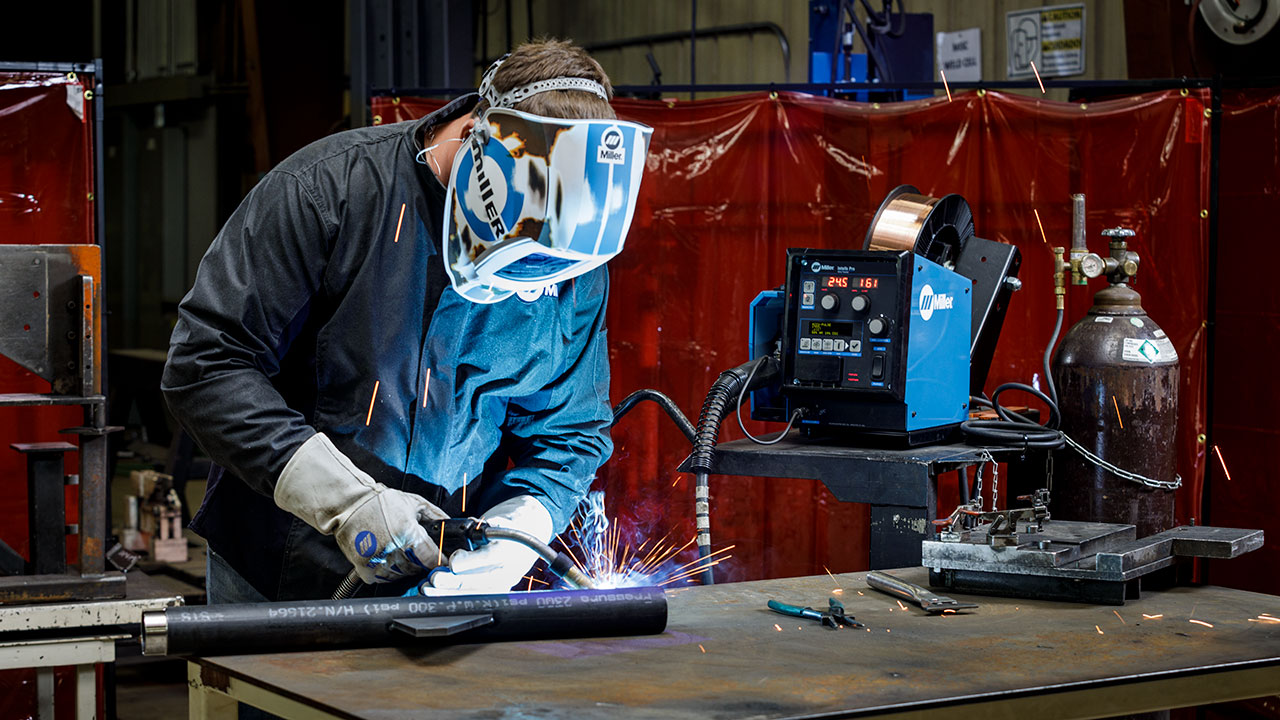Why a Welding WPS is Crucial: Enhancing Consistency and Compliance
Why a Welding WPS is Crucial: Enhancing Consistency and Compliance
Blog Article
The Ultimate Overview to Welding WPS Procedures: An Extensive Introduction for Welders
In the detailed world of welding, Welding Procedure Specs (WPS) work as the backbone of making certain high quality, consistency, and security in welding operations. Understanding the subtleties of producing, executing, and monitoring WPS procedures is important for welders wanting to boost their craft and satisfy industry standards. As we delve into the various components of a WPS and explore the intricacies of qualification and qualification, we will discover the essential role these procedures play in the world of welding. Allow's embark on a journey to decipher the intricacies and importance of WPS treatments in welding practices.
Relevance of WPS Procedures
Understanding the value of Welding Procedure Requirements (WPS) treatments is critical for guaranteeing the quality and integrity of bonded structures. WPS treatments work as a roadmap for welders, laying out the needed steps, criteria, and products required to accomplish a sound weld. By sticking to WPS guidelines, welders can make sure consistency in their job, resulting in structurally sound and trusted welds.
One of the key reasons why WPS procedures are essential is their duty in keeping weld high quality and integrity. Complying with the defined welding criteria and techniques detailed in the WPS helps protect against flaws such as porosity, cracking, or insufficient fusion, which can jeopardize the toughness and longevity of the weld.

Components of a WPS
A Welding Procedure Specification (WPS) usually makes up necessary components that detail the certain needs for executing a weld, ensuring uniformity and high quality in the welding procedure. The essential components of a WPS consist of crucial variables such as base steels, filler steels, preheat and interpass temperature levels, welding procedures, protecting gases, welding settings, and post-weld warmth treatment requirements.
Base steels refer to the materials being signed up with, while filler metals are utilized to load the gap between the base metals throughout welding. The welding process outlines the particular strategy to be made use of, whether it's gas steel arc welding (GMAW), secured metal arc welding (SMAW), or another technique. Welding settings define the alignments in which welding can be performed.

Credentials and Certification
Having actually established the necessary parts of a Welding Procedure Spec (WPS), the focus now shifts in the direction of the important facets of certification and certification in welding methods.

Accreditation, on the other hand, is the official acknowledgment of a welder's credentials by a relevant qualification body or company. Welding accreditations are typically based upon the specific welding procedures, materials, and positions a welder is qualified to deal with. Holding a legitimate welding certification demonstrates that a welder fulfills industry requirements and is skilled to carry out welding jobs to the required specifications.
Creating a WPS
To establish a Welding Procedure Specification (WPS) that meets market requirements, careful consideration of welding processes, materials, and functional parameters is essential. The initial step in producing a WPS is to recognize the welding procedure to be used, such as imp source gas steel arc welding (GMAW) or shielded metal arc welding (SMAW)

Carrying Out and Keeping An Eye On WPS
Upon finalizing the extensive Welding Treatment Spec (WPS) that carefully information welding processes, products, operational specifications, and top quality guarantee measures, the emphasis shifts to efficiently carrying out and keeping an eye on the well established procedures. Execution entails ensuring that all welders entailed in the task are familiar with the WPS and follow it meticulously during the welding process. Reliable find more application and tracking of the WPS are important for guaranteeing the honesty, strength, and security of the welded joints, eventually adding to the general success of the welding job.
Final Thought
In final thought, understanding and complying with Welding Treatment Requirements (WPS) is crucial for welders to make certain high quality, uniformity, and security in their job. By recognizing the elements of a WPS, obtaining correct qualifications and accreditations, creating in-depth treatments, and executing and checking them successfully, welders can boost their abilities and efficiency in welding practices. Sticking to WPS procedures is necessary for generating high-grade welds and conference sector standards.
In the elaborate globe of welding, Welding Treatment Specifications (WPS) offer as the backbone of ensuring high quality, consistency, and security in welding procedures. The welding procedure details the particular method to be made use of, whether it's gas steel arc welding (GMAW), secured steel arc welding (SMAW), or an Visit Website additional approach.To establish a Welding Procedure Specification (WPS) that fulfills market criteria, mindful consideration of welding processes, products, and operational specifications is crucial. The first action in creating a WPS is to recognize the welding process to be made use of, such as gas metal arc welding (GMAW) or secured steel arc welding (SMAW)Upon wrapping up the comprehensive Welding Treatment Spec (WPS) that meticulously details welding processes, materials, operational specifications, and top quality guarantee measures, the focus shifts to effectively applying and monitoring the recognized treatments.
Report this page